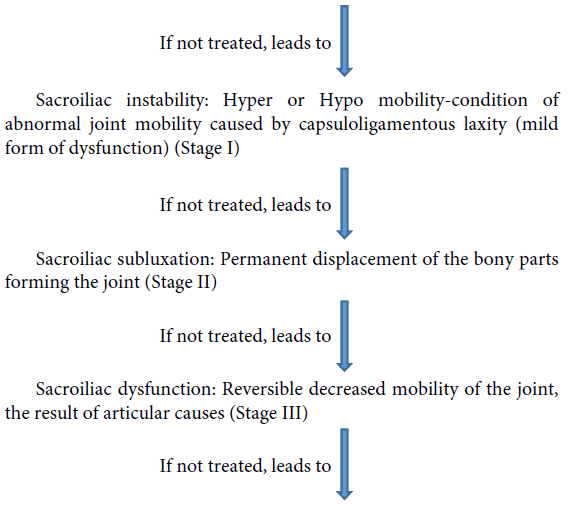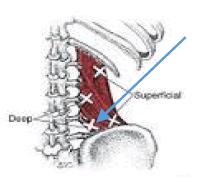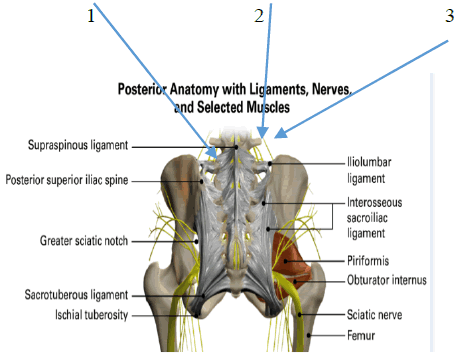Short Communication Open Access
Effects of High Power Pain Threshold Static Ultrasound (HPPTSU) on Subjects with SI Joint Pathology
Amit Dhawan*
Sardar Bhagwan Singh PG Institute of Institute of Biomedical Sciences and Research, Dehradun, India
- *Corresponding Author:
- Amit Dhawan
Sardar Bhagwan Singh PG Institute of Biomedical Sciences and Research, Dehradun, India
Tel: +918126098007
E-mail: drdhawanamit@gmail.com
Received date: June 23, 2017; Accepted date: June 27, 2017; Published date: July 03, 2017
Citation: Dhawan A (2017) Effects of High Power Pain Threshold Static Ultrasound (HPPTSU) on Subjects with SI Joint Pathology. J Tradit Med Clin Natur 6:227.
Copyright: © 2017 Dhawan A. This is an open-access article distributed under the terms of the Creative Commons Attribution License, which permits unrestricted use, distribution, and reproduction in any medium, provided the original author and source are credited.
Visit for more related articles at Journal of Traditional Medicine & Clinical Naturopathy
Introduction
Each patient who suffers with low back pain with or without radiating symptoms should be checked for comprehensive examination of SI joint before making any conclusion.
The patients suffering with low back pain often complains of radiating pain down the buttocks, back side of the leg, and sometimes continuing below the knee to the leg. When they approach a physician/ surgeon they are directed for MRI or CT scan and in maximum cases it is revealed that they are suffering with degenerative effects of spine, disc prolapse, stenosis etc. After that the treatment starts with medicines (steroids, pain killers, multivitamins etc.), physiotherapy (TENS, IFT, SWD, Traction etc.) and lastly we have various surgical options. The agony of the patient still continues. Usually ignored but very frequent and important causes like the involvement of Long Posterior Sacroiliac Ligament, Trigger points over the Quadratus Lumborum Muscle, Iliolumbar Syndrome, Posterior Superior Iliac Bursa Syndrome, Iliac Apophysitis, and Superior Gluteal Nerve Entrapment between iliac crest and thoracolumbar fascia are often missed during the comprehensive assessment & examination of Sacro-Iliac Joint pathology.
High Power Pain Threshold Static Ultrasound (HPPTSU)
Sacroiliac joint pathology is a complex term which may involve the inflammation of bursa, ligament [1-3], trigger points in the muscles or entrapment of the surrounding nerves but it follows a systematic hierarchy from mild to severe involvement:
With the advancing age, the core musculature surrounding the lumbosacral spine weakens.

Sacroiliac arthritis: Inflammatory condition of the joint (severe form of dysfunction) (Stage IV)
Usually, the patient approaches the physician/physiotherapist in Stage III when there is a dysfunction in the working mechanism of the joint either in the form of a trigger point in the muscle, inflammation of the ligament and bursa, or entrapment of the nerve due to changes in the mechanical interface. In this stage the reversal of symptoms and correction of underlying pathology is still possible.
A multiple case trial was conducted in which the patients with sacroiliac dysfunction (Stage III) who had low back ache with and without radiating pain to the buttocks or to the knee were included in the study.
The subjects were divided into the following subdivisions:
1. Sacroiliac Dysfunction due to trigger points in Quadratus Lumborum muscle.
2. Sacroiliac Dysfunction due to inflammation of long posterior sacroiliac ligament and Iliolumbar ligament.
3. Sacroiliac Dysfunction due to posterior superior iliac spine bursitis.
Criteria for subject inclusion:
• Increased discomfort with sustained positions such as standing, sitting and lying, with the inability to attain a position of comfort.
• Radiating buttock pain which can be reported as a generalized distribution of “achiness” which can radiate upto the thigh.
• Increased discomfort with stair or hill climbing.
• Tenderness is found near the lumbo-sacral promontory and PSIS area.
After meeting the inclusion criteria, subjects were assessed for trigger points in the Quadratus lumborum in the region where paraspinal muscles meet the iliac crest, bursitis in which tenderness is palpated just over Posterior superior iliac spine and ligament dysfunction in which there is tenderness along the line of L5 vertebrae and iliac crest, and just inferior to the PSIS for long posterior sacroiliac ligament [4,5].
The subjects were treated with High Power Pain Threshold Static Ultrasound (HPPTSU) which was different than the conventional ultrasound therapy. In conventional ultrasound the applicator is moved in smooth overlapping sweeps or circles at rates of a few centimeters per second over areas of 25-100 cm2.
HPPTSU was applied in (W/cm2) in continuous modes, with the probe placed directly on the trigger point and held motionless on subjects with SI Joint Dysfunction due to Quadratus Lumborum Trigger Points. To elicit threshold pain, the ultrasound probe must be kept static on the trigger point. Intensity was gradually increased to the level of maximum pain the patient could bear. Intensity can vary from patient to patient according to the threshold of their skin resistance. It was kept at that level for 4 to 5 seconds and then reduced to the half-intensity level for another 15 seconds conventional ultrasound the applicator is moved in smooth overlapping sweeps or circles at rates of a few centimeters per second over areas of 25-100 cm2.
Location of the Probe for Quadratus Lumborum
Mostly the Quadratus lumborum develops trigger points deep in the muscle just above the posterior superior iliac spine [6,7].

The ultrasound probe was placed just above the posterior superior iliac spine as marked by the arrow.
In cases of SI Joint Dysfunction due to inflamed ligament or Bursitis, the HPPTSU was modified. The Ultrasound probe was placed directly over the ligament or bursa with the intensity of 2.5-3.0 w/cm2 till the moderate warmth was felt over the surface of the skin and then the probe was moved to the adjoining area of the ligament or bursa. The total treatment time was 10 min.
Location of the Probe for Long Posterior (Dorsal) Sacroiliac Ligament, Iliolumbar Ligament and Iliac Crest Bursa
The probe was placed just inferior and medial to the lower part of Posterior Superior Iliac Spine (PSIS) for dorsal sacroiliac ligament (1), just at the line of attachment from L5 vertebra to the PSIS for Iliolumbar ligament (2), and just superior to PSIS for bursa (3) as marked by the arrows.

The subjects reported immediate pain relief which were satisfactorily maintained till the next treatment session. The average number of sessions was 5 to 7 for the complete pain relief.
The technique was non-invasive and free of adverse effects if applied after accurate diagnosis with knowledge of regional anatomy.
This technique was applied in cases of SI Joint Dysfunction, but it was seen that it is equally effective in treating patients in Stages I and II.
Stages I and II subjects also respond very well to other electrotherapeutic agents but for patients in Stage III this was the highly effective strategy. Reversal of symptoms had been seen in Stage III patients with HPPTSU.
The results of the study indicate that low back ache patients’ needs to be diagnosed for SI joint pathology before treating them as per the results of the investigation which are more likely to show degenerative changes in the subjects of higher age groups and if the cause of SI Joint dysfunction is soft tissue (ligament or muscle injury) due to which low back pain arises, the best available treatment is HPPTSU.
References
- HamiltonC (2014) Diagnosis and current treatments for sacroiliac joint dysfunction: a review. Curr Phys Med Rehabil Rep 2: 48-54.
- Madani SP (2013) Sacroiliac joint dysfunction in patients with herniated lumbar disc: a cross-sectional study. J Back Musculoskelet Rehabil 26: 273-278.
- Hamauchi S (2010) Sacroiliac joint dysfunction presented with acute low back pain: three case reports. No Shinkei Geka 38: 655-661
- Weksler N (2007) The role of sacroiliac joint dysfunction in the genesis of low back pain: the obvious is not always right. Arch Orthop Trauma Surg 127: 885-888.
- Yushin K (2014) A preliminary study on the effect of high-power pain threshold ultrasound to desensitize latent trigger points: a double-blinded randomized study. J Musculoskelet Pain 22: 175-181.
- Yushin K (2014) A preliminary study on the effect of high-power pain threshold ultrasound to desensitize latent trigger points: a double-blinded randomized study. J Musculoskelet Pain 22: 175-181.
- Unalan H, Majlesi J, Aydin FY, Palamar D (2011) Comparison of high-power pain threshold ultrasound therapy with local injection in the treatment of active myofascial trigger points of the upper Trapezius muscle. Arch Phys Med Rehab 92: 657-662
Relevant Topics
- Acupuncture Therapy
- Advances in Naturopathic Treatment
- African Traditional Medicine
- Australian Traditional Medicine
- Chinese Acupuncture
- Chinese Medicine
- Clinical Naturopathic Medicine
- Clinical Naturopathy
- Herbal Medicines
- Holistic Cancer Treatment
- Holistic health
- Holistic Nutrition
- Homeopathic Medicine
- Homeopathic Remedies
- Japanese Traditional Medicine
- Korean Traditional Medicine
- Natural Remedies
- Naturopathic Medicine
- Naturopathic Practioner Communications
- Naturopathy
- Naturopathy Clinic Management
- Traditional Asian Medicine
- Traditional medicine
- Traditional Plant Medicine
- UK naturopathy
Recommended Journals
Article Tools
Article Usage
- Total views: 4909
- [From(publication date):
August-2017 - Apr 03, 2025] - Breakdown by view type
- HTML page views : 4024
- PDF downloads : 885
